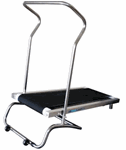With the summer season fast approaching, you may be considering installing a new pool or making some improvements to your current one. Either way, one of the most important components of owning a clear blue swimming pool is the pool pump. By pulling water through a filter, it recirculates the water to sustain a clean and hygienic environment for your family and friends - day in and day out. The Hayward Super Pump is a great all-around pool pump that delivers dependable, hassle-free results.
With energy costs at an all-time high during the summer months, the Hayward Super Pump has the ability to keep your pool clean and your wallet happy. This heavy-duty pool pump comes in a variety of speeds including single- and dual-speeds. A dual-speed pump can alternate between two speeds to help reduce energy usage, compared to a single-speed pump that constantly runs at a high speed, even when cleaning at full power is unnecessary. It’s similar to leaving your air condition on full blast while everyone is out of the house; this waste of energy will eat away at your electric bill. A dual-speed pool pump will cost more up front compared to a single-speed pump but will help you save more money in the long run. However, just like your A/C, the act of being conscious and aware of when your pump is on and off can help reduce energy costs and save you money. In this case, the Hayward single-speed super pump is a more affordable option that will deliver equally impressive results.
The single-speed and dual-speed Hayward Super Pump comes with ½, ¾, 1, 1 ½, 2 and 2 ½ horsepower for maximum efficiency.
Another advantage the Hayward Super Pump offers is that it’s a self-priming pump - meaning it can use an air-water mixture to reach a fully-primed pumping state, compared to standard centrifugal pumps that will stop working if it becomes air-bound.
Other features include:
- A high-performance motor for cooler and quieter operation
- A 110-cubic-inch lint basket to catch leaves and environmental litter
- See-through strainer cover with swing-aside hand knobs
- Made of corrosion proof thermoplastic for durability and longevity of life
- Service-ease design for easy access to internal parts
Buy the Hayward pool pumps at The Pool Guy Store and cut costs when it comes to keeping your pool clean and running at its best! Every Hayward swimming pool pump ships for free!







